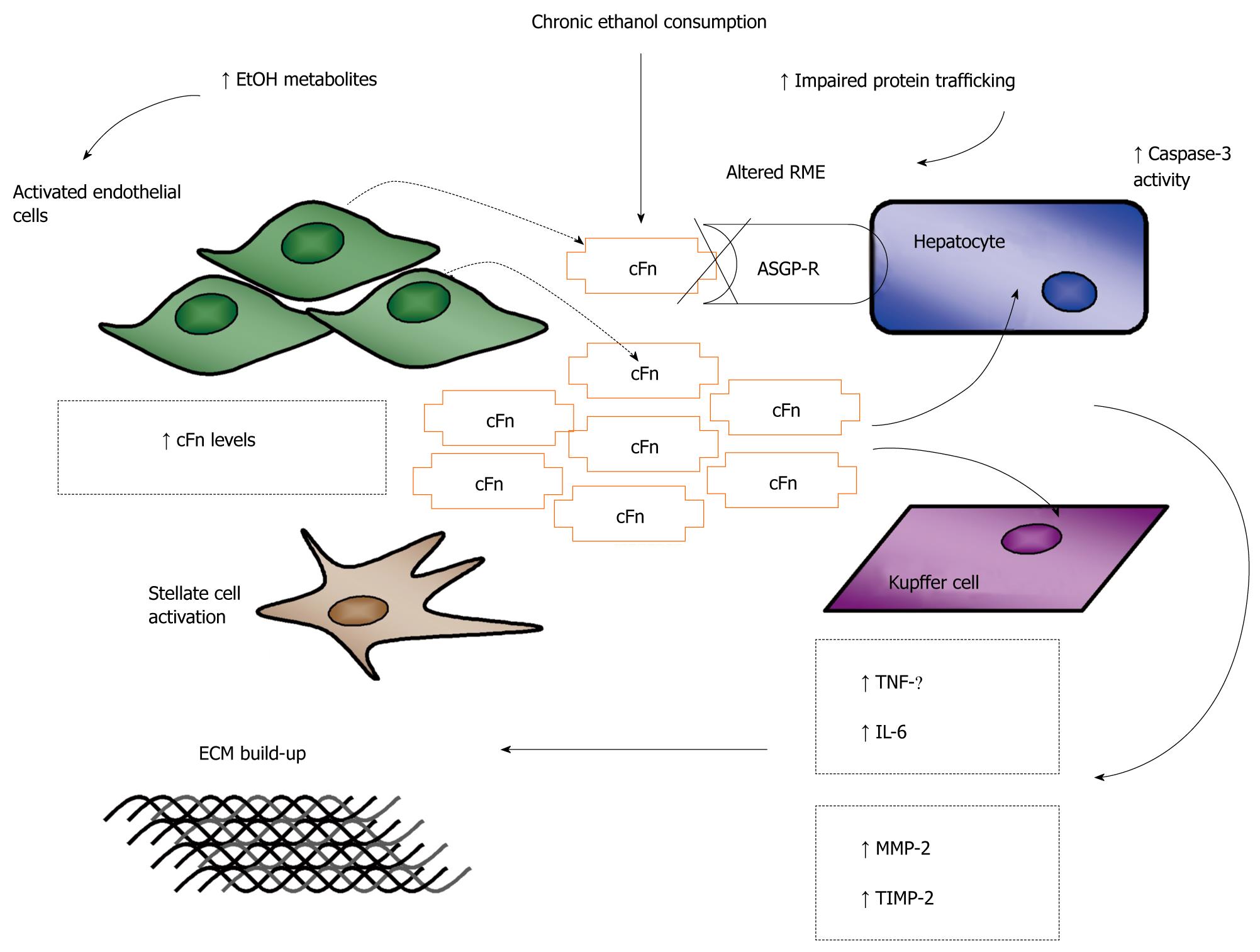Copyright
©2011 Baishideng Publishing Group Co.
World J Gastroenterol. May 28, 2011; 17(20): 2482-2499
Published online May 28, 2011. doi: 10.3748/wjg.v17.i20.2482
Published online May 28, 2011. doi: 10.3748/wjg.v17.i20.2482
Figure 3 Schematic representation of the proposed model of ethanol-induced liver injury linking altered asialoglycoprotein receptor clearance of cellular fibronectin with hepatocyte and kupffer cell activation by the accumulating protein.
The alcohol induced up regulation of cellular fibronectin (cFn) production by sinusoidal endothelial cells (SECs) and its impaired clearance by the hepatocyte-specific asialoglycoprotein receptor (ASGP-R) leads to the accumulation of cFn in the liver. Hepatocytes (HCs) and kupffer cells (KCs) are stimulated by cFn to produce the pro-inflammatory/pro-fibrogenic cytokines, tumor necrosis factor (TNF)-α and interleukin (IL)-6, which further activate hepatic stellate cell (HSCs) stimulating their transformation to the pro-fibrogenic phenotype. HCs and KCs are also stimulated to produce the matrix degrading enzyme, matrix metalloproteinase (MMP)-2 and its corresponding inhibitor, tissue inhibitor of metalloproteinase (TIMP)-2. Greater levels of TIMP-2 are secreted resulting in the inhibition of MMP-2 activity and subsequent build-up of the extracellular matrix (ECM), characteristic of the early onset of fibrotic liver damage. RME: Receptor mediated endocytosis.
- Citation: Aziz-Seible RS, Casey CA. Fibronectin: Functional character and role in alcoholic liver disease. World J Gastroenterol 2011; 17(20): 2482-2499
- URL: https://www.wjgnet.com/1007-9327/full/v17/i20/2482.htm
- DOI: https://dx.doi.org/10.3748/wjg.v17.i20.2482









